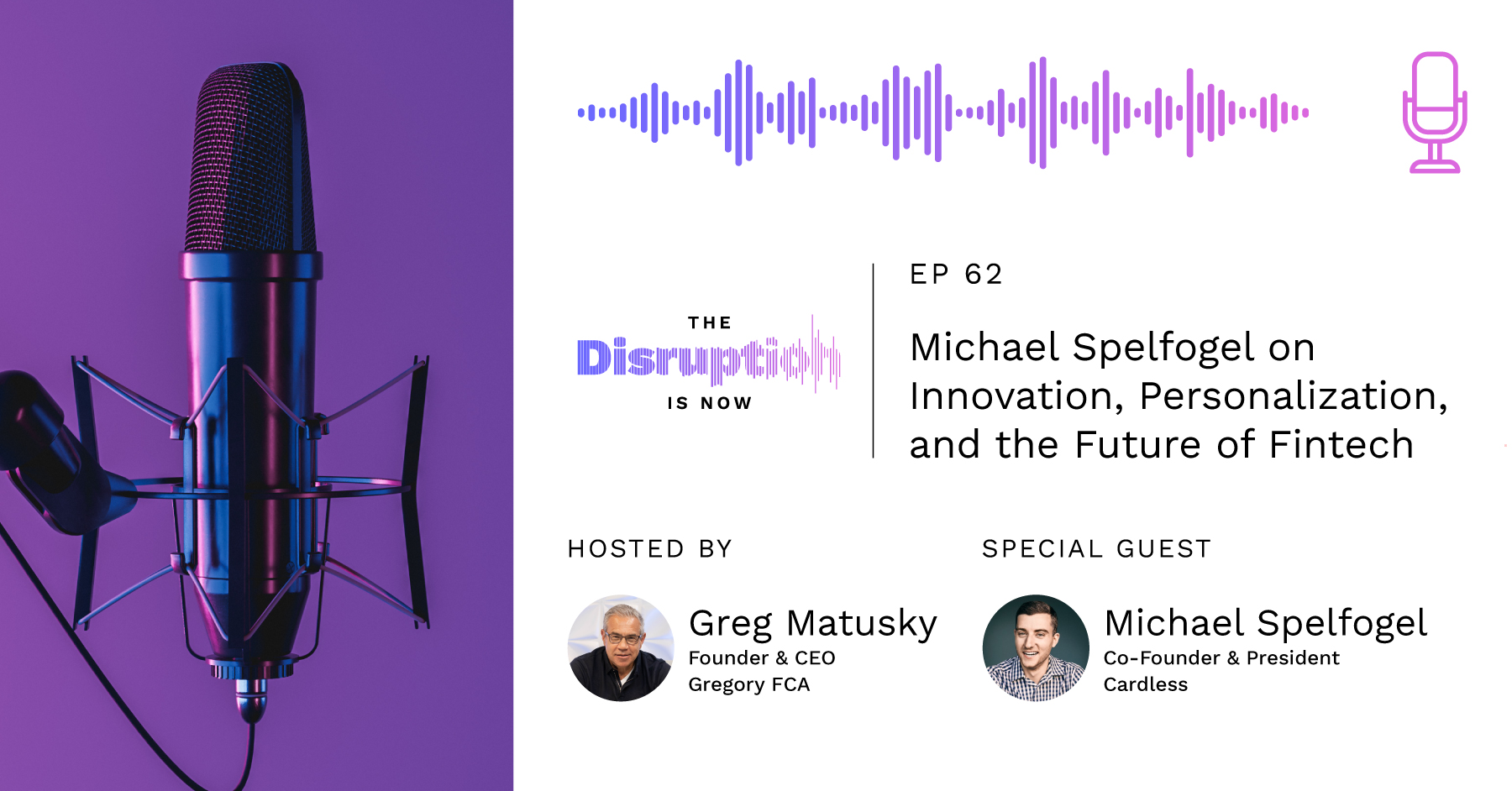At a Whole Foods in Bryant Park, Michael Spelfogel sketched out a startup idea on the back of a napkin. Six years later, he’s CEO of that company — Cardless — and partnering with brands like Qatar Airways and Alibaba to rethink how consumers use credit.
In this episode of The Disruption Is Now, host Greg Matusky sits down with Michael to talk about why the credit card industry is stuck in the past and how AI can fix it.
They discuss how false positives kill customer trust, why cashless payments are still a distant dream in the U.S., and how product-market fit nearly broke the company.
Watch now:
Key takeaways
Branded credit cards are becoming engagement engines
Cardless is helping brands like Alibaba and Qatar Airways use credit cards to better understand, attract, and retain their most valuable customers.
These co-branded cards offer customized rewards — like 60-day payment terms or 3% back — based on what the customer actually values.
Michael explains how every offer is designed with intention, shaped by user feedback, and backed by data, turning the card from a payment tool into a customer relationship platform.
Legacy banks are too slow to keep up with digital expectations
While at Lyft, Michael saw firsthand how hard it was to work with traditional banks. He describes 18-month development cycles and outdated systems that made launching a branded credit card painfully slow.
By contrast, Cardless rebuilt the infrastructure from scratch, offering brands more flexibility, faster rollouts, and better tech. Now brands can launch in weeks, with full control over the customer experience.
AI is transforming customer service and fraud detection
Customer service is one of the most frustrating parts of dealing with a credit card. False positives and call center limbo add unnecessary friction.
Cardless is using AI to flip that experience. Spelfogel says AI tools help increase self-service resolution and predict fraud patterns.
This reduces customer complaints and makes the entire process more intuitive, secure, and scalable. The key isn’t replacing humans, but using AI to know when to step in.
The emotional power of branding still drives spending
Why do people use a Delta Amex instead of a generic card? Because they’re emotionally invested.
Spelfogel reveals that 1% of U.S. GDP went through Delta’s card last year. It’s not people who are flying every week, but people dreaming of a trip.
That emotional hook drives daily behavior, and Cardless is helping brands tap into that. Whether it’s travel, shopping, or business tools, the card becomes a reflection of who the customer is and what they care about.
The name Cardless is a vision of the future
Inspired by Spelfogel’s time in China, where QR codes and mobile payments dominate, Cardless is built for a future where credit is digital and integrated directly into consumer experiences.
The plastic card may still exist, but the real value lies in how credit is accessed and personalized through mobile-first tools and AI-backed systems.
Key Moments in the Conversation
- How Michael’s first credit card sparked his interest in the space (1:15)
- What Cardless does and how it works with brands (2:20)
- Why working with legacy banks is so difficult (4:24)
- The founding napkin sketch at a Whole Foods in Bryant Park (5:22)
- Why Cardless doesn’t mean cashless — yet (5:49)
- Alibaba cardholders can toggle between cashback or financing (7:08)
- How China’s shift to cashless payments inspired Michael (9:03)
- Using AI to improve service and prevent fraud (11:10)
- Greg’s painful experience trying to activate a new card the traditional way (12:30)
- What drives people to choose co-branded cards like Delta’s (16:09)
- Michael’s most difficult moment as an entrepreneur (17:47)
- How a data-driven reality check helped Cardless pivot (18:58)



